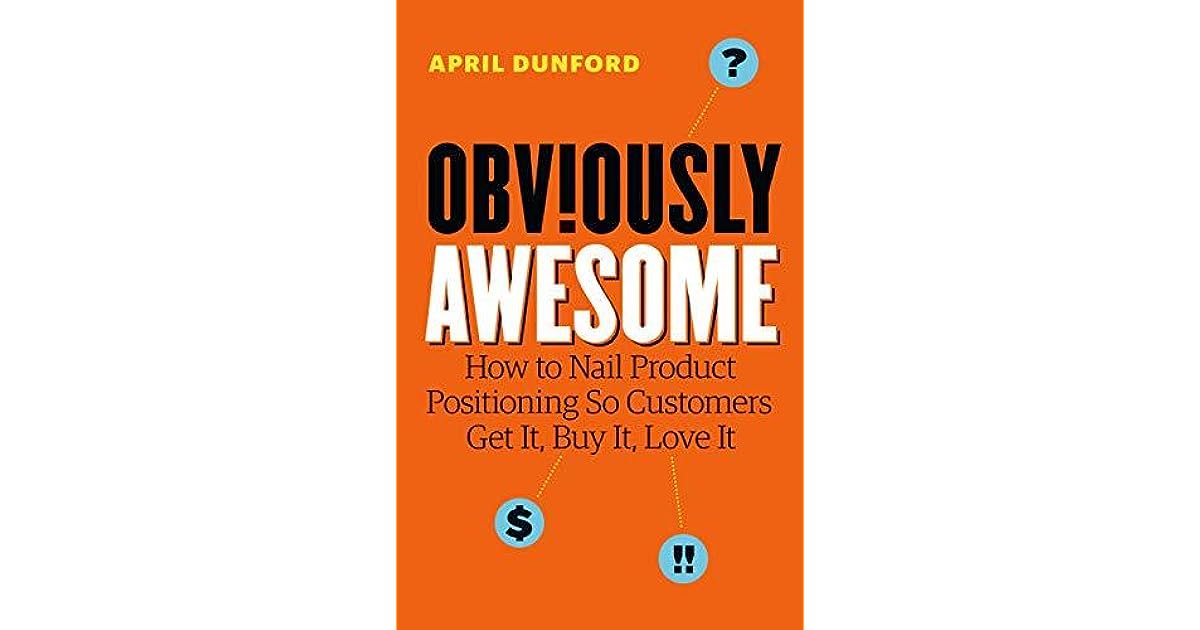The Context of Positioning: An “Obviously Awesome” Book Summary – Part 1

Summary
At Heinz Marketing, our consultants and engagement managers have been sharing marketing-related books to stay abreast of the changing world of marketing and business. This book review is part one of April Dunford's "Obviously Awesome", focusing on why context matters in deliberately positioning a product or service, and touches on a couple of traps we often find ourselves in when trying to position our product.
By Sarah Threet, Marketing Consultant
At Heinz Marketing, we value continuous learning and growth. We want to be the kind of consultants who are always on top of the latest trends so we can position ourselves as a strategic resource for our clients. Topically, the next book that we have been reading is a book on positioning, “Obviously Awesome: How to Nail Product Positioning so Customers Get It, Buy It, Love It” by April Dunford. This book, unlike most on the positioning topic, teaches you HOW to position your product.
Positioning your product is much like providing the context in which your product lives. Context can completely change the way customers view your product, or anything else; it’s transformative. One of the examples that Dunford provides is the experiment involving the acclaimed violinist, Joshua Bell.
The Transformative Process of Context
Joshua Bell is an award-winning musician who sells out shows averaging $300/ticket. Given that context, one might assume if he were to play publicly on the streets, he would amass a huge crowd of fans, starstruck at the opportunity to watch him play for free. But positioning him in a different setting completely changed the way the audience perceived him.
While Joshua played his violin outside of a busy subway station, the largest crowd amassed at any given time was only about 7 people. Over 1,000 passed in the 45 minutes he played, and only 27 donated, for total earnings of less than $40 – not even a sixth the amount a venue would charge for a ticket to see him on a professional stage. The contextual difference was the stage on which he was performing. Most folks who passed by simply perceived him as a man just trying to make a dollar, and others even found his music a little annoying.
In a performance hall, Joshua would have his own sign, an accompanying orchestra, a program that provided information about who he is and his many accolades, and he would be dressed to the nines like everyone else attending to listen to his music. The audience is provided with the context that tells them why they should care about listening to this performance and why they should spend good money. Most people rely on a frame of reference; they need to be able to compare one product or experience to another to better understand its value.
Most products are exceptional only when we understand them within their best frame of reference. The failing for most of us when we try to position ourselves or our products/services is that we think that the context is obvious.
The Two Traps of Contextual Positioning
When we have created a new product or service, we often fall into the trap of becoming pigeonholed to one positioning context: the one that’s most obvious. The reality is there are many ways to position the same product/service.
Trap 1: You’re so stuck on the idea of what you built you don’t see when your product transforms into something else.
The example Dunford provides is of a baker with a new kind of cake: “the greatest chocolate cake in the world”. The baker is already married to a set of decisions based off the idea they are going to create this great cake:
- They’ve decided their target audience will be those with the income and interest in buying a fancy cake, so they will want to sell directly to a prestigious bakery or through a fine dining restaurant.
- Their competitive alternatives include other cakes, ice creams, pies, and assorted desserts.
- If selling alongside their other desserts, they will likely not be able to upcharge too much.
- Product differentiators will need to appeal to an audience of fancy cake consumers, so they may want the cake to be made with organic ingredients, or appeal to a high-brow taste, including fancy French salt in the chocolate.
In the process of developing this fancy chocolate cake, the baker has ended up with a product much smaller in size – a single serving, and so they have wrapped it in a fancy packaging. Instead of a traditional cake, the product transformed into something more like a muffin, and that contextual shift makes a big difference even though the ingredients are the same.
- Their target audience now needs to shift; muffins are more frequently seen at coffee shops rather than fancy bakeries or being sold at high-end restaurants.
- The competitive alternatives shift to products more like Danishes, donuts, and bagels.
- The price point would likely shift to cheaper, and therefore, the baker would want to sell more of them.
- Since muffins are typically viewed as morning confectionaries, adding loads of chocolate to a muffin indulges a niche set of morning sweet-tooths. These folks are less likely concerned with the fancy additions, like French salt, and instead care more about extra chocolate, maybe some caramel, and getting more calories out of the morning meal.
Frequently, the product we end up with is not the product we set out to build, and it can be difficult for us to see the gradual transformation and how the context needs to shift with the transformation of the product. It’s important to be open-minded about what you’re creating and where it may end up, because customers can often feel confused with a product or service that doesn’t match with the way the company is positioning it.
Trap 2: You carefully designed a product for a particular market, and then the market changed.
Markets, and the way consumers perceive markets, are constantly changing; competitors are frequently evolving their offerings in response to these market shifts. Sometimes, despite how well you positioned your product for its intended market, the positioning still fails because the market around the product has changed; the context has changed and therefore the positioning is no longer relevant.
In Dunford’s example, the muffin baker has shifted their product to target health-conscious consumers by filling it with nuts, seeds, and dates, and marketing it as a “diet muffin”. A new competitor opens across the street and many of your customers are suddenly frequenting that establishment – why? It turns out the competition is selling the exact same muffin you are, however, they have positioned their muffin as a “gluten-free paleo snack”, much more aligned with the trendy perception of being health-conscious but not falling for diet culture. The context shifted over time as eating habits and trendy diets have changed, and the original muffin baker did not reposition their muffin for this market evolution.
How to Position Your Product Like Your Company Depends on It
We are frequently told there is one default way to position a product and not that there are many ways to reframe the way we and the consumer might think of the product. It’s not often taught that positioning is a deliberate choice that requires times, attention, and systematic process.
In Dunford’s example of deliberate positioning, we once again revisit the baker who was trying to make a fancy cake. This time, the baker reimagines the cake as a portable piece of cake one might be able to take and consume with their coffee on-the-go. What they end up inventing is a piece of cake attached to a stick, and originally, that’s how they conceive of positioning their new product: “cake on a stick”. But Dunford asks, “Is it really just a cake on a stick, and is that how you want your consumers to perceive it?’

What the baker has newly crafted may be cake as defined by the ingredients, but it’s not cake in the traditional sense consumers perceive cake and enjoy cake. Yes, the product contains cake, and that’s the part that is being literally consumed, but it has a different shape (it’s round rather than triangular like a traditional piece of cake) and it’s delivered on a portable stick. What makes it unique is not that it’s cake but the other elements of the product. In the end, the baker sees their product is more like a lollipop for adults to consume with their coffee, so they reposition their product as a “Cake Pop”.
Context Matters – So How do I Position My Product?
I will continue to write about this book over the coming months and provide more of the details learned from April Dunford’s book. For now, here are a few things to consider about how to deliberately position yourself and your product:
- What is your target audience’s point of view of the problem and how your product/service solves that problem?
- Is your product/service aiming to solve a particular pain point you are aware already exists?
- How is your product uniquely different from your competitors and why should consumers care?
- What are the characteristics of a consumer who would really value your unique offering?
- What is the best market context that can showcase and make obvious your unique value to those who would benefit most from it?





